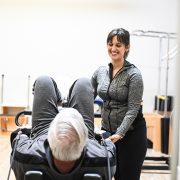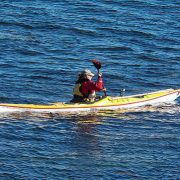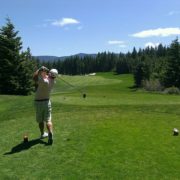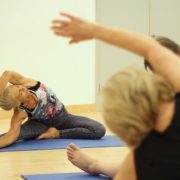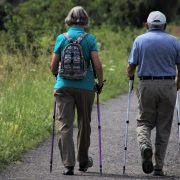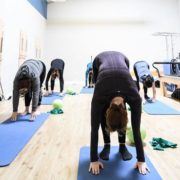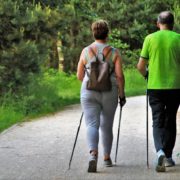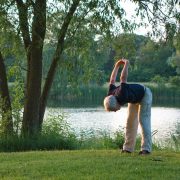7 Fun and Healthy Ways to Celebrate Mother’s Day on the Seacoast
Mother’s Day is a time to honor the incredible women in our lives. While flowers and brunch are timeless, sometimes the most meaningful gift is simply quality time spent together. This year, why not swap the restaurant waitlists and crowded gift shops for something a little more memorable?
Here on the Seacoast of New Hampshire, we’re lucky to have access to some of the most beautiful coastline, trails, and natural parks in New England. Whether your mom loves to move, relax outdoors, or try something new – there’s no shortage of ways to celebrate with her in a fun, active, and healthy way.
Here are 7 fun and healthy ways to celebrate Mother’s Day on the Seacoast:
Take a Scenic Coastal Bike Ride
Treat Mom to a leisurely bike ride along the Seacoast’s stunning shoreline. Begin in downtown Portsmouth and pedal out toward Rye via Route 1A. This route winds through the historic charm of New Castle, offers sweeping ocean views, quaint seaside cottages, and scenic beaches along the way. It’s the perfect mix of fresh air, gentle movement, and quality time – made even sweeter with a stop for coffee or ice cream along the way.
Explore the Rockingham Rail Trail
If Mom prefers a quiet ride or walk away from busy roads, the Rockingham Rail Trail is a fantastic option. This converted rail corridor stretches for miles through peaceful woodlands, wetlands, and charming rural areas. The wide, flat trail is perfect for casual biking or a long walk, and it’s ideal for chatting as you move at your own pace. Access points in Newfields allow for convenient parking to explore as much or as little of this trail as you desire.
Kayak or Paddle at Odiorne or Rye Harbor
If your mom loves being on the water, an afternoon of paddleboarding or kayaking could be the perfect outing. Paddleboarding challenges your balance and engages the core, while kayaking offers a more relaxed rhythm with a great upper-body workout. No gear? No problem. Local favorites like Portsmouth Paddle Co. and Portsmouth Kayak Adventures offer rentals, lessons, and even guided tours – making it easy for beginners to join in the fun.
Hike Mount Agamenticus or the Urban Forestry Center
If your mom enjoys hiking, there are plenty of local trails that offer both beauty and tranquility. Mount Agamenticus in York, Maine provides several loop trails and beautiful summit views. For something a little less strenuous, check out the Urban Forestry Center in Portsmouth. It offers peaceful, wooded trails that are perfect for an afternoon stroll. The forest and mountains are great places to unplug, breathe deeply, and enjoy each other’s company away from the hustle of everyday life.
Visit Nubble Lighthouse and Stroll the Marginal Way
Make a scenic drive to York, Maine and surprise Mom with a visit to the iconic Nubble Lighthouse. It’s one of the most photographed lighthouses in the country—and for good reason. After taking in the views, consider walking a portion of the Marginal Way in nearby Ogunquit, a picturesque oceanside path with sweeping vistas and benches for a rest or a nice chat.
Celebrate Mom’s Green Thumb
If your mom has a love for gardening, flowers, or nature’s beauty, spend part of the day visiting your favorite local nursery or garden center – and then help her get her hands dirty by planting something together. Whether it’s herbs, flowers, or even a raised veggie bed – she’ll appreciate the help and time spent together.
Stroll Through Prescott Park and the Portsmouth Waterfront
Put your best walking shoes on and take a walk through Prescott Park and along the Portsmouth waterfront. By mid-May, the gardens are beginning to bloom, and the salty air and river breeze make for a perfect spring stroll. Grab a treat from a local café, browse the shops, or simply sit and take in the view together.
Is Pain or Injury Keeping you from Enjoying these Activities?
Mother’s Day lands at a great time of year to get outside and do something active with your loved ones. But if nagging pain or injury is holding you back – or has you hesitant to try something new this season – it may be time to seek help from a mechanical pain specialist. They will help you figure out the source of your problem and provide you with natural treatment methods designed to get you out of pain and back to doing everything you love quickly.
Local to the Seacoast? CLICK HERE to speak with a specialist now.
Dr. Carrie Jose, Physical Therapy Specialist, and Mechanical Pain Expert, owns CJ Physical Therapy & Pilates in Portsmouth, NH, and writes for Seacoast Media Group. If local to Portsmouth, NH, and looking for help – request a FREE Discovery Visit with one of her Specialists by CLICKING HERE.



